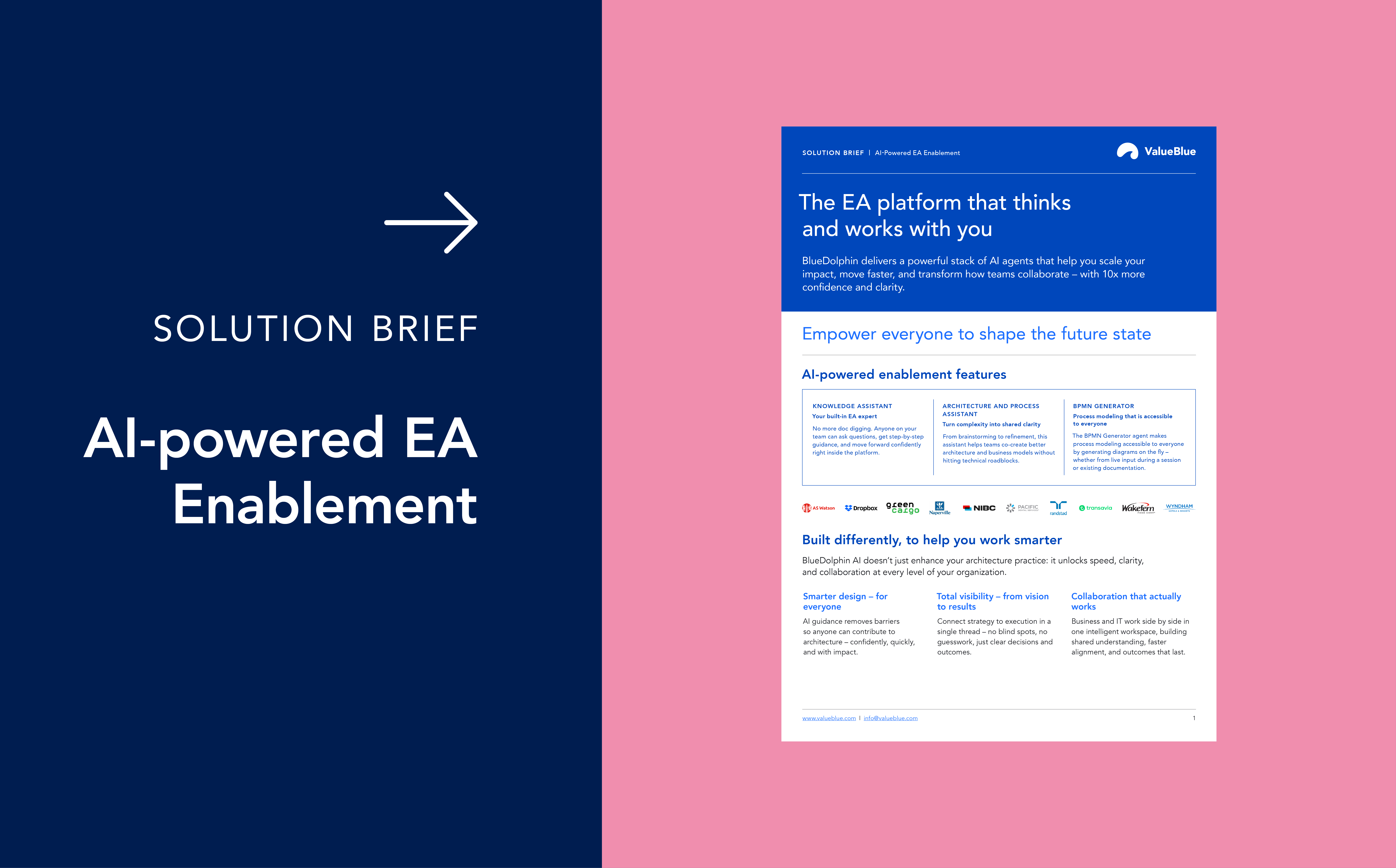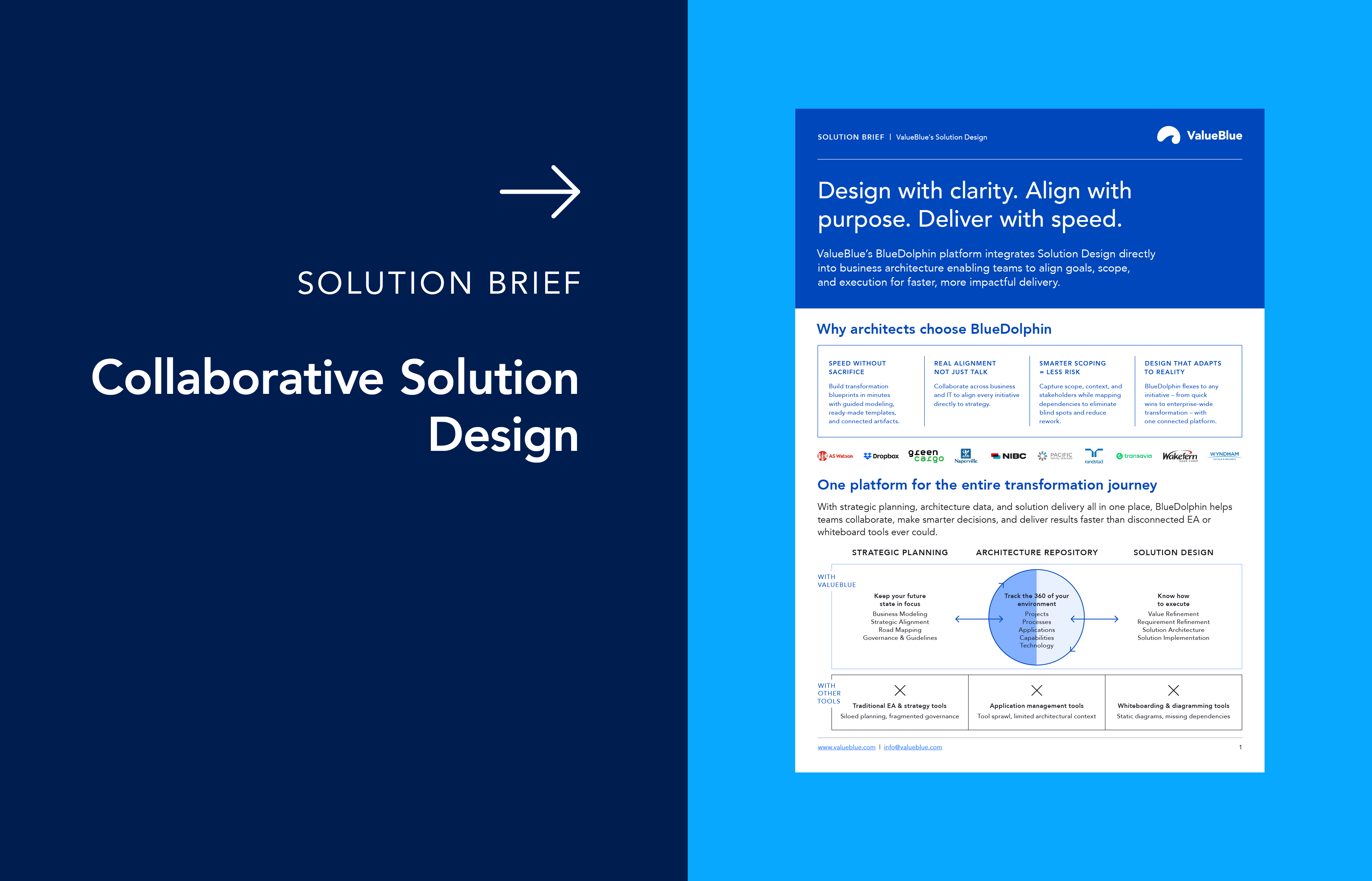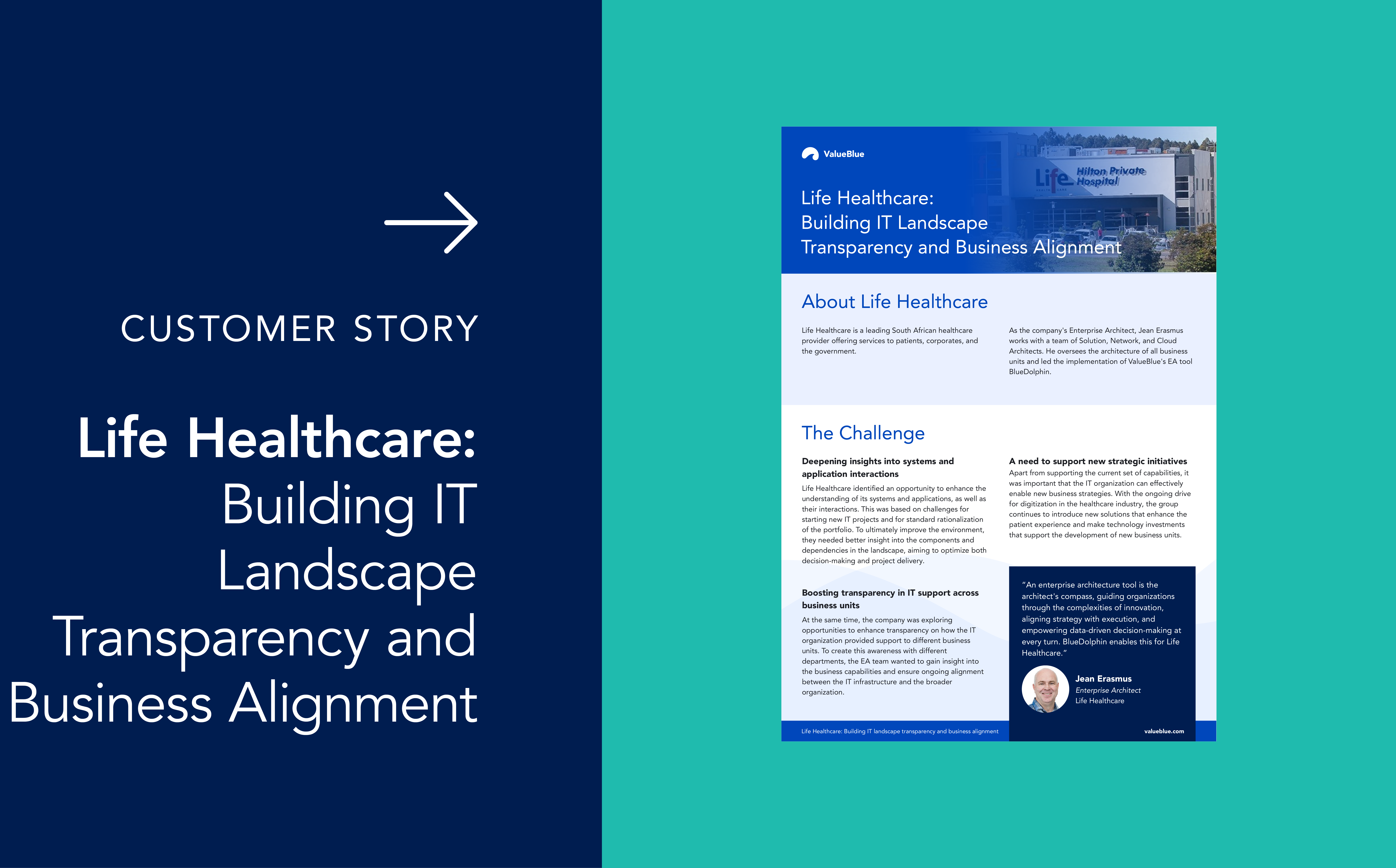Proven AI Prompts to Accelerate Your Process Design
AI is everywhere these days. You can hardly scroll through your news feed or attend a meeting without someone mentioning how it’s going to change everything. The hype is real, and so are the endless articles touting the next big use case. But with so much noise, how do you cut through and find ways to make AI work for your organization – especially when it comes to something as foundational (and sometimes as daunting) as Process Design?
If you’ve ever stared at a blank page, trying to map out a business process, you know that the creative process can be a slog. That’s where AI can offer a real, practical boost. At ValueBlue, we’ve spent years helping organizations untangle the complexities of Enterprise Architecture. We’ve seen firsthand how AI can accelerate not only process design but also how teams consume and understand enterprise information. We will explore it in today's article.
Why AI needs a good prompt
Before we dive into the magic of AI-powered process design, let’s clear up one common misconception: AI isn’t a mind reader. It doesn’t just “know” what you want. Instead, it relies on the prompts you provide – the questions you ask and the context you supply. In fact, many organizations find that their biggest challenge isn’t using AI-generated outputs but rather figuring out how to ask the right questions in the first place.
Think of AI as a super-smart assistant who’s eager to help but needs clear instructions. The better your prompts, the better your results. This is especially true in Process Design, where clarity and structure are everything. Below, we share some practical prompts and strategies to help you get the most out of AI – whether you’re designing processes from scratch or trying to make sense of someone else’s diagram.
The creator’s perspective: Breaking through the blank page
Let’s start with the creator’s side of the equation. Designing a business process is about more than just drawing boxes and arrows. It’s about translating fuzzy, often unwritten knowledge into something structured and actionable. Employees need to understand their roles, responsibilities, and the specific tasks they’re expected to perform. But here’s the reality: many organizations don’t have formalized, documented processes. Even fewer have high-quality process models that are easy to follow.
So, what happens? You sit down to document a process – maybe for the first time – and suddenly, you’re stuck. What should come first? Who’s involved? What are the key steps? It’s the dreaded “writer’s block,” but for Process Design.
How AI can help
Here’s where AI steps in as your creative partner. Many business processes, such as onboarding, invoicing, or customer support, exhibit common patterns across organizations. Instead of reinventing the wheel every time, you can use AI to generate a starting point. AI can quickly draft an initial version of your process, providing you with a concrete starting point to react to and refine.
But AI isn’t there just for getting started. It can also help you:
- Flesh out process details with suggested descriptions and enhancements.
- Identify missing roles or steps.
- Spot potential bottlenecks or inefficiencies.
- Provide best-practice modelling tips.
In short, AI acts as a “buddy” for process modelling, helping you move from a blank page to a working draft – and then to a polished, detailed model.
Turn AI disruption into your competitive advantage!
your competitive advantage!
Download our free eBook and learn:
- What roles will disappear, and which will define the future workforce.
- How AI accelerates business transformation across industries.
- Why Enterprise Architecture is critical to strategic planning and success.
- Practical steps to future-proof your organization and stay ahead of competitors.
Prompts to supercharge your Process Design
Here are some practical prompts you can use to get the most out of AI during process design:
|
Prompt |
Why Ask This? |
|
Can you help me model an end-to-end customer journey using BPMN, from initial contact to post-sale support? |
Jumpstarts the modelling process with a concrete example. |
|
What steps could I take to simplify this process? |
Inspires ideas for process improvement or redesign. |
|
Are there any missing roles in this process? |
Helps identify gaps from a people or responsibility perspective. |
|
What tasks would escalation management perform? |
Clarifies role-specific activities and responsibilities. |
|
How can I best model tasks performed in parallel by escalation management? |
Offers guidance on best-practice modelling techniques. |
|
What questions should I ask 1st Line Support to better understand what they do? |
Prepares you for interviews with subject matter experts. |
|
Are there any potential bottlenecks in this process? |
Highlights risks and areas for potential automation. |
|
Which tasks are missing descriptions? |
Ensures your process documentation is complete and user-friendly. |
|
Could you write a description for each of these tasks? |
Fills in documentation gaps with clear, concise content. |
By using these prompts, you can accelerate your Process Design, avoid common pitfalls, and create models that are both comprehensive and easy to understand.
The consumer’s perspective: Making process models accessible
Now, let’s flip the script. Imagine you’re on the receiving end of a process model. Maybe you’re a stakeholder, a new employee, or a business analyst trying to make sense of someone else’s work. Too often, process models are tossed “over the fence” with the expectation that everyone will instantly understand them. In reality, that’s rarely the case.
Process models – especially those using formal notations, such as BPMN – can be intimidating. It’s not that they’re inherently more complex than a written document, but many people simply aren’t familiar with the format. They focus on the shapes and symbols rather than the flow and meaning.
How AI bridges the gap
AI can act as a translator, converting technical process models into clear, plain-language explanations that anyone can understand. This is a game-changer for user adoption. When stakeholders actually “get” what a process diagram means, they’re more likely to engage, provide feedback, and help drive continuous improvement.
AI can also help consumers:
- Summarize complex processes in a few sentences.
- Highlight key decision points and manual steps.
- Suggest questions to ask for deeper understanding.
- Identify areas for optimization or automation.
Prompts to enhance process understanding
Here are some prompts that can help consumers – and process owners – unlock the value of process models:
|
Prompt |
Why Ask This? |
|
What questions should I ask to better understand this process? (e.g., “What five questions should I ask…?”) |
Helps newcomers engage with the process and uncover key details. |
|
Can you describe the purpose of this process? |
Clarifies the objectives and value of the process. |
|
Can you summarize this process in two paragraphs (or 100 words)? |
Provides a quick, accessible overview without jargon. |
|
Can you explain the different decision points in this process? |
Prepares users for their roles by highlighting critical choices. |
|
Which steps in the process are manual? |
Identifies opportunities for automation and efficiency gains. |
These prompts make process models more approachable, actionable, and useful for everyone involved.
The bottom line: AI as a catalyst for a better Process Design
Bringing AI into your process modelling toolkit isn’t just about saving time – though it certainly does that. It’s about making process design more collaborative, creative, and effective. For creators, AI provides inspiration, structure, and expert guidance – helping you break through the blank page and build robust, detailed models. For consumers, AI translates technical diagrams into plain language, making processes easier to understand, adopt, and improve.
The key is to approach AI as a partner, not a replacement. By crafting thoughtful prompts and being clear about your goals, you can harness AI’s power to drive real business value. AI doesn’t have to be intimidating. With a bit of curiosity and the right approach, it can become one of the most powerful tools in your organization’s toolkit.
Ready to get creative and start your AI-powered process design journey? Get in touch!





